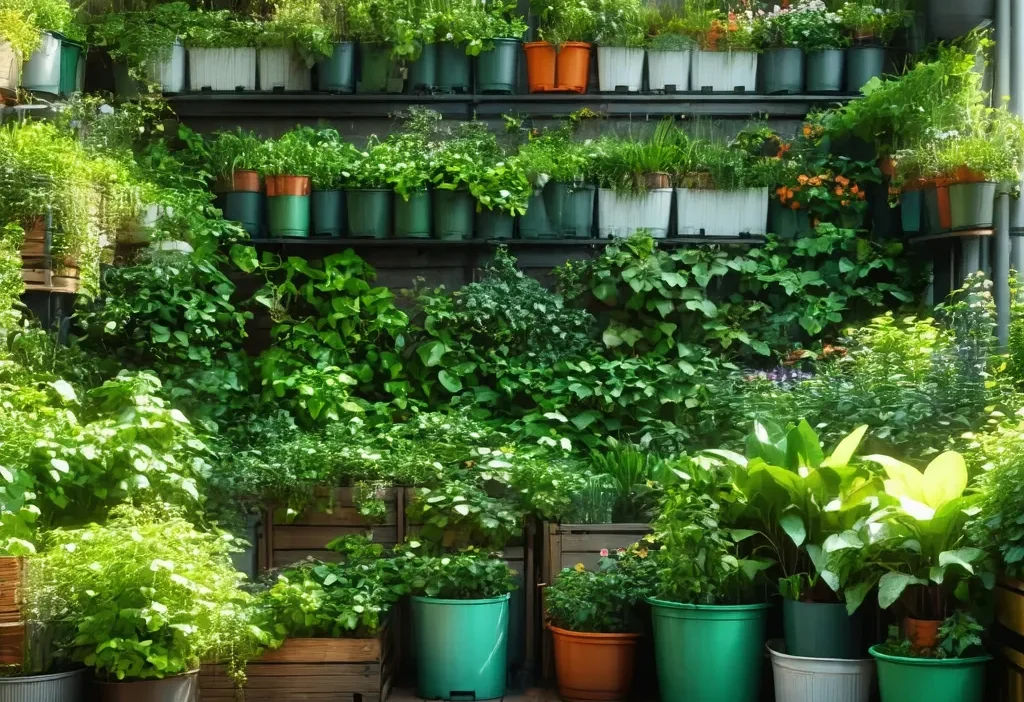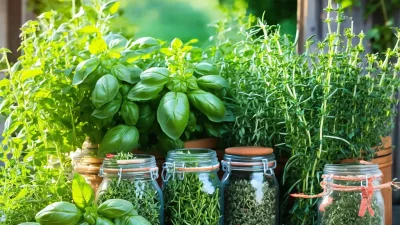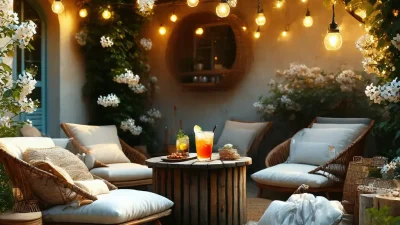Maximizing Small Garden Spaces: Creative Gardening Tips for Urban Enthusiasts
Gardening in small spaces doesn’t mean you have to compromise on creativity or productivity. Whether you’re working with a tiny backyard, a balcony, or even just a windowsill, there are countless ways to make the most of your space. In this guide, we’ll explore some innovative strategies and practical tips to help you transform your limited area into a thriving oasis.
1. Vertical Gardening: Making Use of Every Inch
Vertical gardening is one of the most effective ways to maximize space in small gardens. By growing plants upwards rather than outwards, you can significantly increase your garden’s yield while adding an aesthetic touch to your outdoor area.
- Use wall-mounted planters: Attach pots or containers to walls, fences, or even the side of your house. This not only saves space but also creates a visually appealing display.
- Install trellises or arbors: Train climbing plants like tomatoes, beans, or flowers to grow vertically. These structures can also serve as beautiful focal points in your garden.
- Consider living walls: Create a green wall using modular planting systems. This approach is perfect for small spaces and adds a modern touch to your outdoor area.
For inspiration, check out Gardening Know How, which offers detailed guides on vertical gardening techniques.
2. Container Gardening: Flexibility and Mobility
Container gardening is a versatile solution for small spaces, allowing you to grow plants in almost any type of container, from pots to repurposed items like wheelbarrows or old boots.
- Choose the right containers: Opt for containers with drainage holes to prevent waterlogging. You can also mix and match different sizes and materials for a eclectic look.
- Select space-saving plants: Dwarf varieties of vegetables, herbs, and flowers are ideal for container gardening. Herbs like basil, parsley, and thyme are particularly well-suited to small pots.
- Stack containers: Use stackable planters or stagger them on shelves to save space while creating a layered effect.
Learn more about container gardening at The Old Farmer’s Almanac, which provides tips and recommendations for successful container setups.
3. Raised Beds: Maximizing Soil Space
Raised beds are an excellent option for small gardens, as they allow you to control the soil quality and drainage while making efficient use of space.
- Build compact raised beds: Use materials like untreated wood or composite boards to create shallow beds that can fit into tight areas. You can also build them on legs to save even more space.
- Use deep planting techniques: Fill your raised beds with nutrient-rich soil and plant a variety of vegetables, herbs, and flowers in close proximity to each other.
- Incorporate companion planting: Pair plants that complement each other, such as tomatoes and basil, to maximize growth and deter pests naturally.
For detailed plans on constructing raised beds, visit The Royal Horticultural Society.
4. Smart Plant Selection: Choosing the Right Varieties
Selecting plants that are well-suited to small spaces is key to a successful garden. Look for varieties that are compact, disease-resistant, and thrive in limited areas.
- Dwarf fruit trees: Dwarf citrus or apple trees can provide fresh fruit without taking up too much space. Many dwarf varieties also work well in containers.
- Bulb plants: Bulbs like tulips, daffodils, and hyacinths are perfect for small gardens as they require minimal space and offer vibrant blooms in the spring.
- Edible flowers: Incorporate edible flowers like nasturtiums or pansies into your garden. They add color while also providing a tasty garnish for meals.
Explore plant recommendations at Gardeners’ World, which offers expert advice on selecting the best plants for small spaces.
5. Lighting and Shade Solutions
Lighting plays a crucial role in any garden, especially in small spaces where every inch counts. Proper lighting can enhance the ambiance of your outdoor area while making it more functional.
- Use solar lights: Solar-powered path lights or string lights are an eco-friendly and cost-effective way to illuminate your garden without taking up electrical outlets.
- Add reflective surfaces: Use mirrors, shiny pots, or water features to reflect light and create the illusion of a larger space.
- Incorporate shade structures: Use canopies, umbrellas, or pergolas to provide shade while adding vertical interest to your garden.
For more ideas on lighting and shading, check out Houzz, which features innovative outdoor lighting solutions.
6. Storage Solutions: Keeping Your Garden Tidy
A cluttered garden can quickly become unmanageable, especially in small spaces. Proper storage is essential to keep your tools and supplies organized and within reach.
- Use wall-mounted storage: Install shelves or hooks on walls to store pots, tools, and other gardening essentials without taking up floor space.
- Opt for stackable containers: Choose storage boxes that can be nested inside each other to save space when not in use.
- Create a hanging garden organizer: Use a hanging rack or pulley system to store pots and tools overhead, freeing up valuable ground area.
Discover storage ideas at The Spruce, which offers practical solutions for small-space gardens.
7. Maintenance Tips for Small Gardens
Maintaining a small garden requires regular attention to ensure it stays healthy and vibrant throughout the season.
- Water efficiently: Use drip irrigation or soaker hoses to deliver water directly to plant roots, minimizing waste and ensuring your plants stay hydrated.
- Mulch regularly: Apply a layer of mulch around your plants to retain moisture, suppress weeds, and regulate soil temperature.
- Prune and deadhead: Keep plants tidy by removing spent flowers and pruning back overgrown branches. This encourages healthier growth and prevents overcrowding.
For comprehensive maintenance tips, visit Planet Natural, which provides organic gardening advice for all types of gardens.
Conclusion
Gardening in small spaces doesn’t have to be challenging. By implementing these creative strategies and staying organized, you can create a beautiful, productive garden that brings joy and inspiration to your home. Remember to choose the right plants, optimize lighting and storage, and maintain your space regularly to ensure lasting success.





